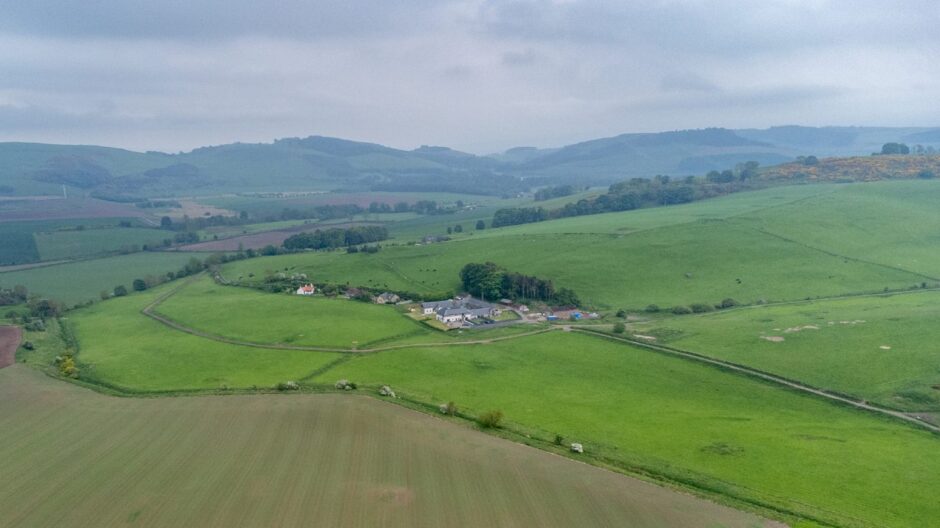
With rolling grass fields stretching towards the River Tay, Blinkbonny Farm has helped generations of farmers to grow food and rear livestock, supporting themselves and their families.
But the scenic stretch of Fife farmland, often dotted with sheep and cows, will look very different in the future if an Italian businesswoman’s plans to plant its fields over with trees comes to pass.
The Land Register of Scotland shows forestry company EB8 Limited bought the Fife farm for a substantial £1,580,000 in November 2021.
Now The Courier can reveal the firm – owned by Italian pasta heiress Emanuela Barilla – hopes to plant 75 hectares of trees at the farm. That includes more than 50 species of mixed broadleaves, fruit bearing and shrub species and up to 20 species of conifer.
The scheme’s agent describes it as the “only project of its kind that we know of in Scotland”.
They argue the landowner has “specifically designed” the forest to create rare woodland. The trees will support insects, birds and mammals and – eventually – produce hardwood timber for use by local furniture makers, the landowner claims.
But the loss of productive farmland to forestry remains an emotive and hugely controversial issue in rural Scotland. The Blinkbonny sale marks one of the first examples of the issue to come to public attention in Fife.
Forestry schemes on farmland in other parts of Scotland, most notably the south-west, have become increasingly common. That has led to rises in the value of land and a growing threat to the traditional family-owned farm.
Farmer’s union NFU Scotland vice president Andrew Connon spoke for many in the industry when he said: “We cannot have trees replacing farms and people.”
Who is Emanuela Barilla, and what is she planning at Blinkbonny Farm?
Ms Barilla is a fourth-generation heir to the Barilla pasta fortune, according to US business publisher Forbes. Forbes estimated her net worth at more than $1 billion in 2018, although she has fallen off the publisher’s billionaires’ list since.
As such, her forestry firm EB8 – which is separate to the Barilla Group – buying the farm in rural north Fife is highly unusual.
The Barilla Group is a family-owned Italian food company.
Established in 1877 in Parma, the “small bread and pasta shop” has grown to become one of the globe’s largest pasta manufacturers.
The company’s website features three Barilla brothers – Guido, Luca and Paolo – who serve as chairman, or deputy chairman, respectively, of the group.
Ms Barilla is not pictured. She joined her brothers as a director of the company in 2002. That is according to the archive section on the Italian pasta giant’s website.
The 56-year-old is said to prefer a lower public profile.
Why does Fife farmland interest a wealthy forestry investor?
Land and forestry agent Patrick Porteous represents EB8. He is the managing director of chartered land and forestry agency Landfor.
Mr Porteous said: “Recognising the need for more diversity within our woodlands, and the lack of rarer species being planted as a result of the high costs associated with establishing these species, the landowner acquired the land in north Fife.”
He said the landowner wishes “to create a more resilient mixed woodland for future generations to benefit from and enjoy the results of planting what could be described as a large-scale arboretum.”
An arboretum is a place where trees and plants are grown for mainly scientific and educational purposes.
Mr Porteous said – unlike many other Scottish forestry investors – EB8 would not be making an application for public money through the Scottish Government’s Forestry Grant Scheme.
“The landowner has specifically designed this project to be much more diverse. So it does not fit within any type of grant scheme.
“They are willing to invest their time and resources in what will be the only project of its kind that we know of in Scotland.”
Why not plant the forest somewhere else?
We asked Mr Porteous why the project had to be located on productive farmland in Fife.
He said woodland only covers 12% of the land area in Fife. That compares to a Scotland-wide figure of 17%. The average in Europe is 36%, he added.
“It is widely recognised that parts of lowland Scotland now have an ideal climate and good soils for the growth of a wider variety of tree species.
“Especially with the effects of climate change, such as drought and extreme weather patterns occurring throughout Europe and Italy.
“Our rainfall and relatively mild climate suits many tree species.
“There is an opportunity to improve [the amount of tree cover] and assist government policy and targets to increase woodland cover in Scotland. As well as to help limit climate change.”
Why has Ms Barilla’s Blinkbonny forest plan alarmed farmers and local politicians?
Robert W MacLeod’s book Lairds and Farmers in north Fife lists Blinkbonny Farm as one of around 180 farms in the area.
Decades of history, as well as years producing food for the table, are tied into each farm’s individual story
The histories, and owners, of each farm are traditionally well-known and often discussed in the farming community.
Blinkbonny has supported at last least four different families since 1928, according to the book.
NFU Scotland vice president Andrew Connon said the planting of trees on farmland remains a “huge bone of contention”.
He said his members are in favour of farm woodlands that integrate into existing farm and croft businesses.
But are opposed to “whole farm afforestation on a commercial scale on productive land.”
“Because of the impact on agricultural activity, food production, rural communities and the potential for land abandonment.”
Could Blinkbonny forest case turn Fife towards more big business agro-forestry?
Local politicians have shared similar concerns about the Blinkbonny forest plan.
Willie Rennie is the Liberal Democrat MSP for north-east Fife.
“Despite all the ministerial rhetoric of the right tree in the right place there are no controls preventing large swathes of good agricultural land being taken over for tree planting.
“So far in Fife its small scale, but that could change. Especially as Fife has easy access to the road network.”
The MSP acknowledged the need for tree planting to tackle climate change, boost biodiversity and for timber production.
“But we need to make sure that we keep a healthy agricultural sector too for food production.”
Conservative MSP for Mid-Scotland and Fife Murdo Fraser shared similar sentiments.
He said: “Whilst encouraging new woodland planting is a positive, there are ample sites in Scotland where trees can be grown without removing land which could be used to produce food.
“As a nation we are already food importers. Creating a system that incentivises this tree planting is only going to exacerbate this issue.”
Why are international forestry investors targeting Scotland?
The Scottish Government is encouraging landowners to plant more trees. Ministers want to hit national forestry targets, produce more timber, increase biodiversity and combat climate change.
As a result, corporate and international investors have bought up large amounts of land across Scotland in recent years. Forestry is seen as tax efficient investment that can also, in some cases, be used to offset carbon emissions.
This has driven up land values with prices spiking in 2021. The increases have left some local farmers priced out of the market for land in their local areas.
Academic Ian Merrell is co-author of the forthcoming Scottish Land Commission’s Rural Land Market Insights Report 2024.
He said: “From 2020/21 it was a bit like the wild west, with people rushing into carbon. Whereas now there’s clearer guidance, sales and permissions are taking much longer than people thought and communities are getting involved.”
The market has now slowed down, he explained.
This is partially due to international economic conditions, and partially due to these tighter Scottish Government controls.
A Scottish Forestry spokesman confirmed the agency had received a proposal for woodland creation at Blinkbonny Farm. Officials are “currently assessing” the application.
“This proposed woodland project will be subject to our environmental impact assessment processes to ensure we get the right tree in the right place.”
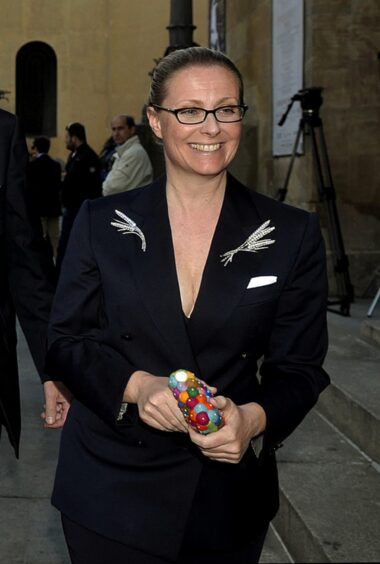
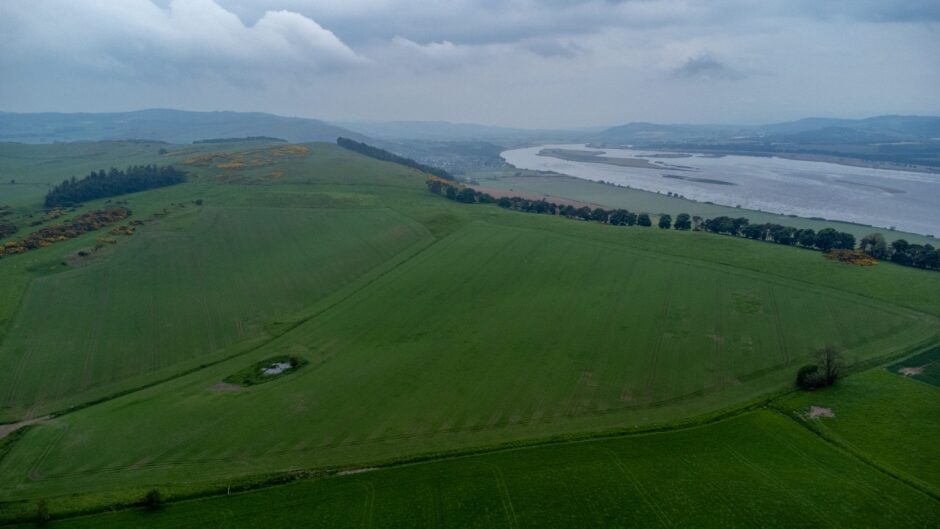
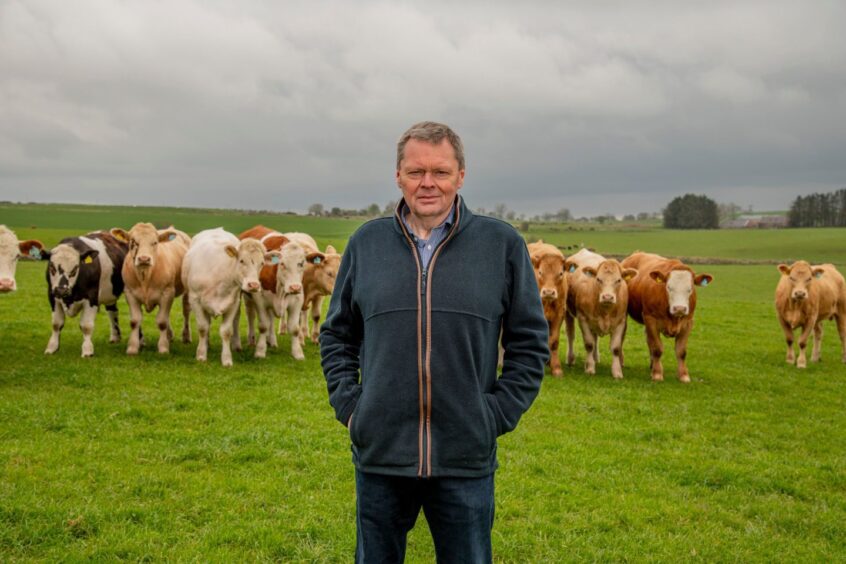
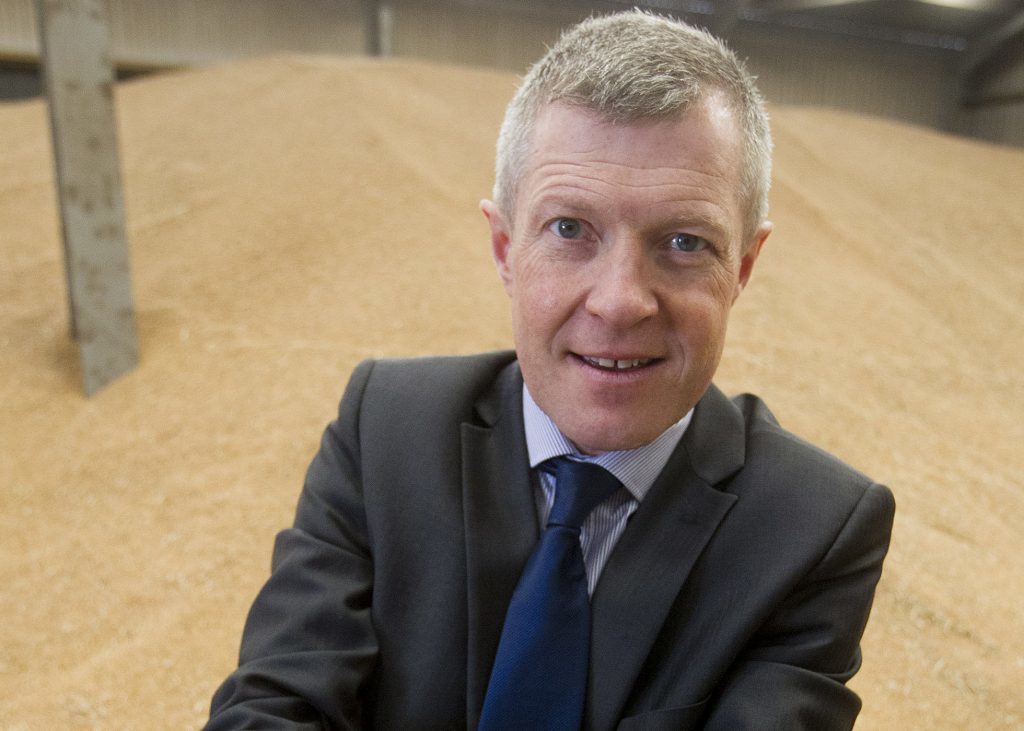










Conversation